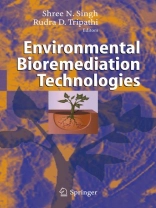Environmental contamination from both natural and anthropogenic sources is, today, a major environmental concern due to pervasiveness and persistence of many toxicants. It is considered as an inevitable evil of our progress and modernization. To decontaminate the soils, sediments and waters, polluted by anthropogenic activities, the scientists and technologists have evolved different technologies over the years. Although we have to pay high cost for physical and chemical environmental technologies, but they are not eco-friendly and safe. Hence, it was deeply realized to develop viable technologies employing microbes and plants to remediate not only metallic residues and radionuclides, but also the xenobiotic compounds like PCBs, PAHs, PCPs, petroleum sludge and the military wastes. No doubt, the scientists have also got some success in this endeavour and as the result, many companies are in place today to promote the sale of plant or microbe-based technologies to deal with specific environmental contamination challenges. Besides, these technologies are se- driven and do not disturb the sites in cleaning process.
Table of Content
Bioremediation of Organic and Metal Co-contaminated Environments: Effects of Metal Toxicity, Speciation, and Bioavailability on Biodegradation.- New Bioremediation Technologies to Remove Heavy Metals and Radionuclides using Fe(III)-, Sulfate- and Sulfur- Reducing Bacteria.- Bioremediation of Soils Polluted with Hexavalent Chromium using Bacteria: A Challenge.- Accumulation and Detoxification of Metals by Plants and Microbes.- Role of Phytochelatins in Phytoremediation of Heavy Metals.- Metal Resistance in Plants with Particular Reference to Aluminium.- Bioremediation of Metals: Microbial Processes and Techniques.- Phytoremediation of Metals and Radionuclides.- Nanotechnology for Bioremediation of Heavy Metals.- Biotechnological Approaches to Improve Phytoremediation Efficiency for Environment Contaminants.- Aquatic Plants for Phytotechnology.- Phytomonitoring of Air Pollutants for Environmental Quality Management.- Phytoremediation of Air Pollutants: A Review.- Phytoremediation: Role of Plants in Contaminated Site Management.- The Role of Macrophytes in Nutrient Removal using Constructed Wetlands.- Nitrate Pollution and its Remediation.- Bioremediation of Petroleum Sludge using Bacterial Consortium with Biosurfactant.- Diversity, Biodegradation and Bioremediation of Polycyclic Aromatic Hydrocarbons.- Environmental Applications of Fungal and Plant Systems: Decolourisation of Textile Wastewater and Related Dyestuffs.- Fungal-Based Remediation: Treatment of PCP Contaminated Soil in New Zealand.- Biofilms in Porous Media: Mathematical Modeling and Numerical Simulation.
Language English ● Format PDF ● Pages 520 ● ISBN 9783540347934 ● File size 5.5 MB ● Editor S.N. Singh & R. D. Tripathi ● Publisher Springer Berlin ● City Heidelberg ● Country DE ● Published 2007 ● Downloadable 24 months ● Currency EUR ● ID 2162130 ● Copy protection Social DRM












